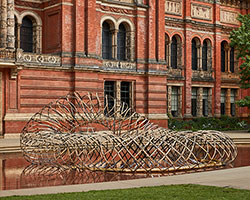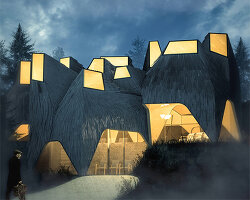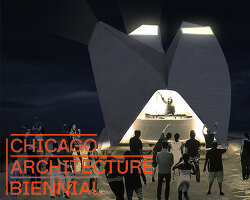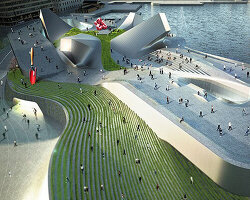toshiki hirano is a japanese architect who, in addition to running his own studio, is co-director of an experimental laboratory at the university of tokyo founded by kengo kuma. hirano joined ‘kuma lab’ in 2013 as a PhD student, before becoming assistant professor in 2017 and co-director of the renamed ‘sekisui house – kuma lab’ in 2020. ‘I learned a lot from kuma, and what I’ve been doing as an individual designer is to push this exploration further, focusing more on the use of synthetic/digital materials and their uncanny qualities,’ the architect tells designboom.
in this exclusive interview, toshiki hirano discusses how he combined traditional techniques with contemporary technologies for ‘reinventing texture’ — his installation which is on view as part of the london design biennale until june 27, 2021.
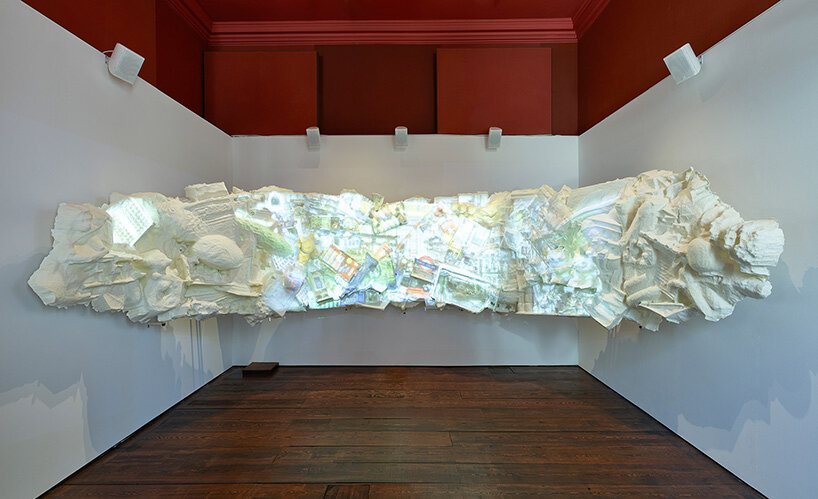
image © prudence cuming, courtesy of clare farrow studio
through his role in the lab, hirano had worked closely with curator clare farrow on developing kengo kuma’s ‘bamboo ring’ for the 2019 london design festival. this previous collaboration has now led to hirano creating an immersive design and sound installation for the third edition of the london design biennale. the pavilion, and its eight meter-long washi papier-mâché wall relief, addresses the present and future of the urban environment through traditional and modern textures, objects and sounds, collected in the cities of tokyo and london. described as a ‘pavilion of friendship’ at a time of barriers and disconnection, the design celebrates the importance of sharing research experiments and digital innovations on an international scale, while at the same time reflecting local traditions and materials.
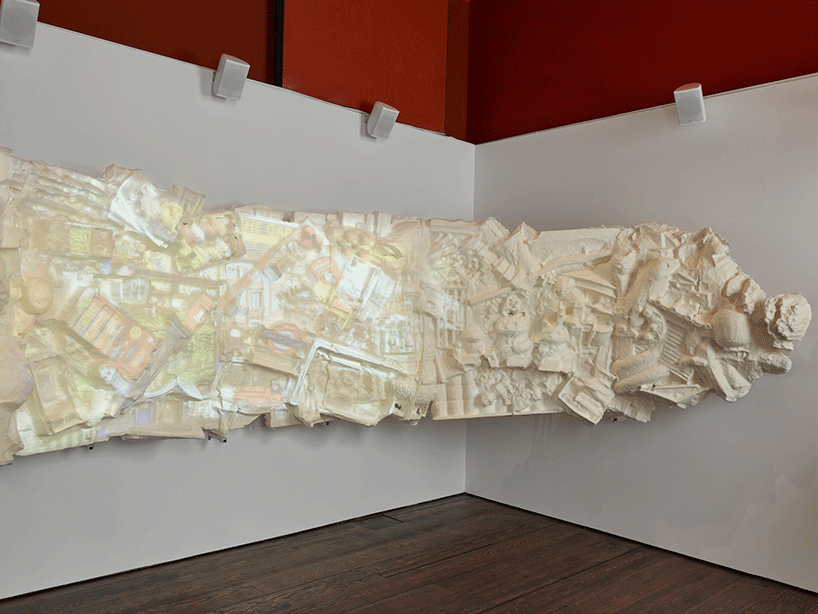
images © prudence cuming, courtesy of clare farrow studio
the work has been made in collaboration with students from the MA interior design at the royal college of art in london. working remotely through hirano’s virtual photogrammetry workshops, the students collected urban textures and made field recordings for the immersive and interactive sound collage that has been created by MSCTY studio in tokyo and designed by KP acoustics. the sound (which can be heard here) responds to visitor interaction, modulating as one moves around the installation. the resulting non-hierarchical juxtaposition of traditional, kitsch, abstract and contemporary elements explores our response to colors, textures, scale and associations. using advanced digital technologies to communicate the complexities of the city, the piece also includes slow, meticulous hand-craft and sustainable, natural materials.
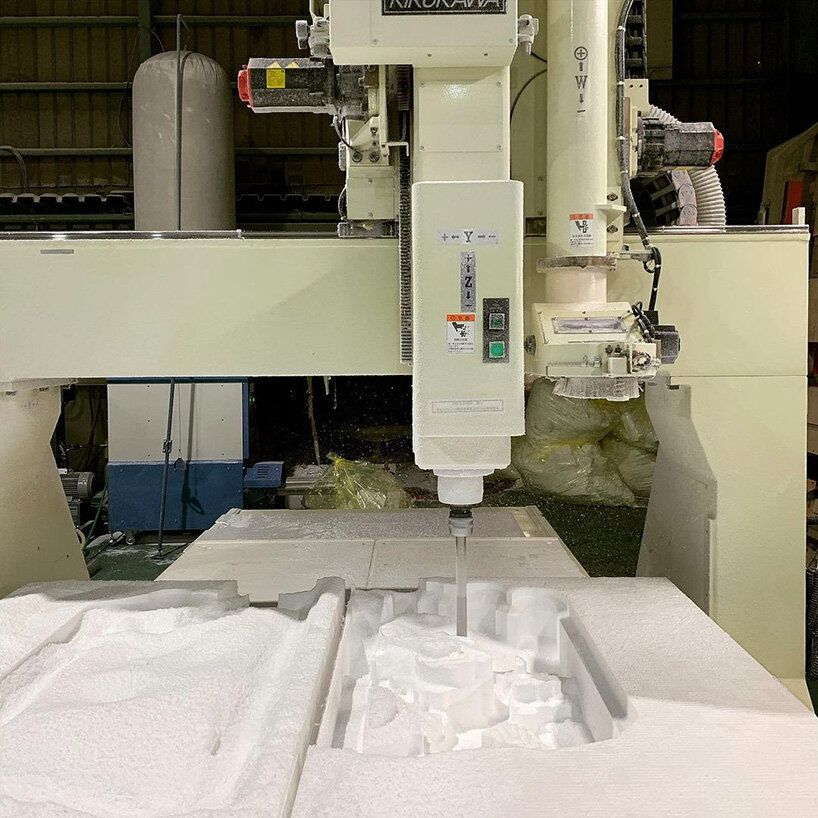
image by toshiki hirano
hirano transforms traditional japanese washi paper, an ancient and environmentally sustainable material grown from natural plant fibers (rather than wood pulp) and the traditional japanese papier-mâché technique, into a material for the 21st century. using 3D scanning and digital fabrication, hirano transforms the flexible, light, thin but durable, organic and biodegradable washi paper into innovative and imaginative structures, with surprising strength, suggesting future possibilities. ‘washi paper is made of longer fibers than western paper and this makes washi paper sturdier,’ toshiki hirano explains. ‘what I found interesting in this project is that the structural properties of surfaces that have highly complex forms made of digitally scanned models are more rigid and stronger compared to a smooth and flat surface.’
‘I think the direct impact of COVID-19 on the built environment that we are witnessing, such as face masks, clear partition walls, and others should fade away rather quickly,’ hirano adds. ‘however, I think there are significant indirect and latent impacts to our sensitivities that could last much longer and affect our cultures and eventually how the city is. I don’t think these impacts can be verbally described, and that’s why I think the artistic approach in this project is effective in addressing the issues.’ read our interview with the japanese architect in full below.

image by toshiki hirano
designboom (DB): how did you choose the objects and elements to include in the relief?
toshiki hirano (TH): as the pandemic hit tokyo in the spring of 2020, I got stuck in tokyo and couldn’t travel anywhere out of the city. it became unnecessary for me to even go out from my home since all meetings and classes went online. going out without any particular reason was not encouraged (but not prohibited) by the government under a state of emergency. so scanning and collecting elements became a good excuse for me to go out. I tried to cover as many areas as possible: marunouchi, asakusa, roppongi, shinjuku, shibuya, kichijo-ji, akasaka, etc.
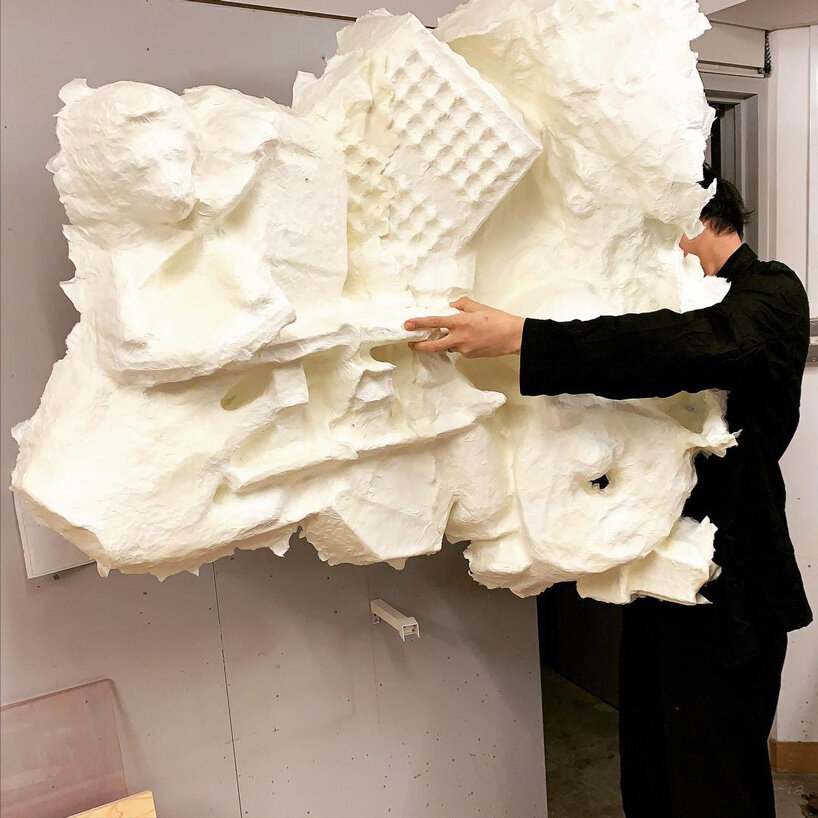
image by toshiki hirano
TH (continued): what I found interesting is that the way I see the city completely changed during the process; things that I usually dismiss became more visible. they are usually banal or kitsch, but I think that these kinds of elements play an important role to make ‘a’ city ‘the’ city. this might also be because the city was deserted due to the state of emergency. I also tried to make the selection random and didn’t want to focus on a specific scale and quality when collecting objects as I think the city is formed by diverse textures layered at multiple scales.
DB: how do the elements collected by the students in london compare with the elements you selected from tokyo?
TH: I think the colors are different: most of what the students collected in london are red or brown whereas the elements from tokyo are mostly greyish or green, and this difference in colors created an interesting dynamism when the projection mapping lights up the relief.
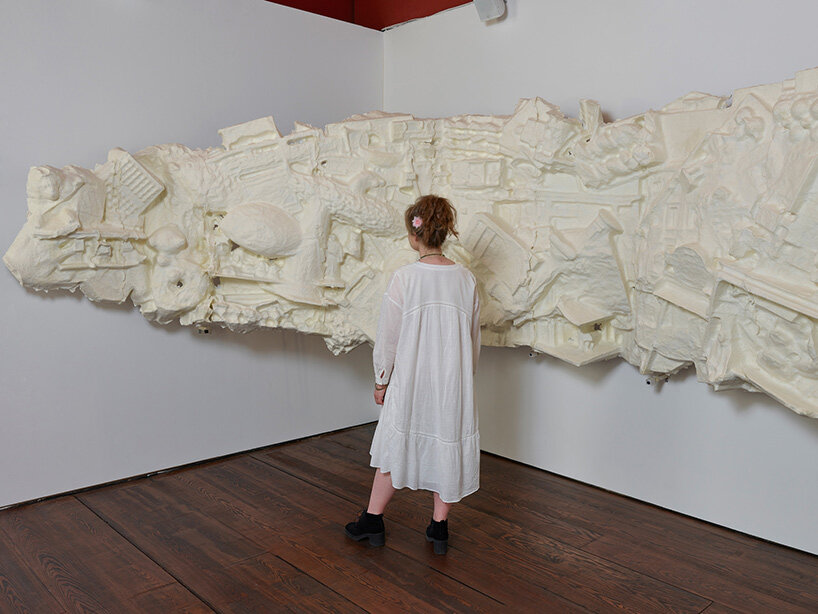
image © prudence cuming, courtesy of clare farrow studio
DB: what were some of the challenges of realizing the papier-mâché wall relief?
TH: one of the most challenging things in this project was to handle highly complex unrationalized forms of 3D-scanned objects. each 3D scanned model has approximately 100,000 meshes, and the relief consists of more than 100 scanned models. in the conventional design process in architecture you don’t handle such a heavy and highly complex model so I needed to come up with a new workflow.
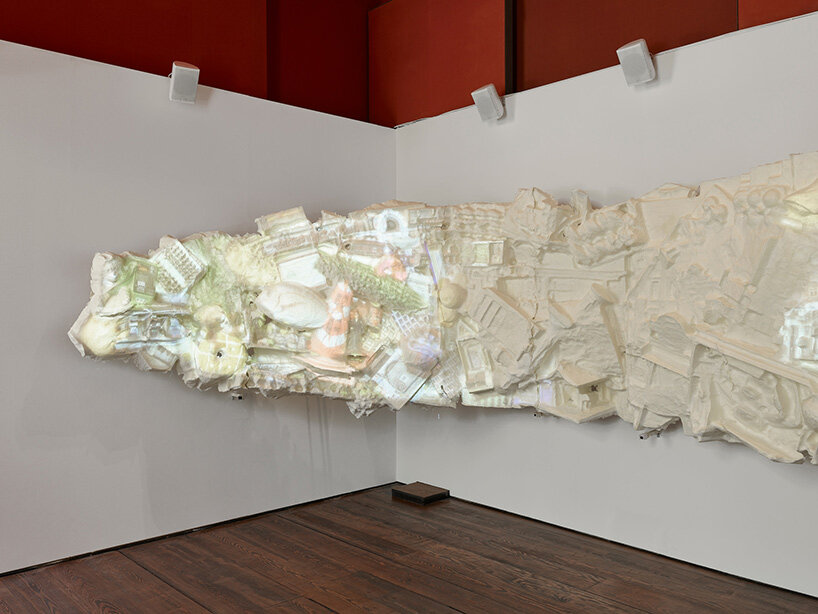
image © prudence cuming, courtesy of clare farrow studio
TH (continued): architecture has a limited ability to handle those kinds of forms and has been stuck to rationalized/simplified forms even with the use of computers due to the discipline’s long history of its ties to rationalization. this project can be read as one of the attempts to break away from this long tradition of the discipline and to explore the new aesthetics of architecture.
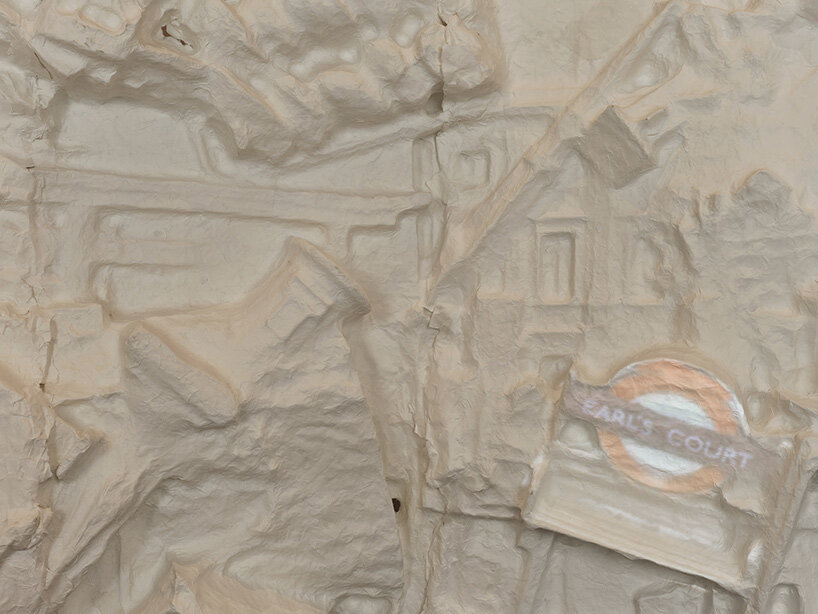
image © prudence cuming, courtesy of clare farrow studio
DB: generally speaking, is combining traditional techniques and contemporary technologies something that you enjoy?
TH: yes, I was previously working at kengo kuma laboratory at the university of tokyo where I led small scale projects, and kuma’s main focus was on exploring new materiality in architecture through the use of digital technologies and traditional techniques. those small scale projects were quite experimental and mostly temporary, but kuma always tries to feed the ideas and concepts from those projects into his design practice at KKAA. I learned a lot from him and what I’ve been doing as an individual designer is to push this exploration further, focusing more on the use of synthetic/digital materials and their uncanny qualities.
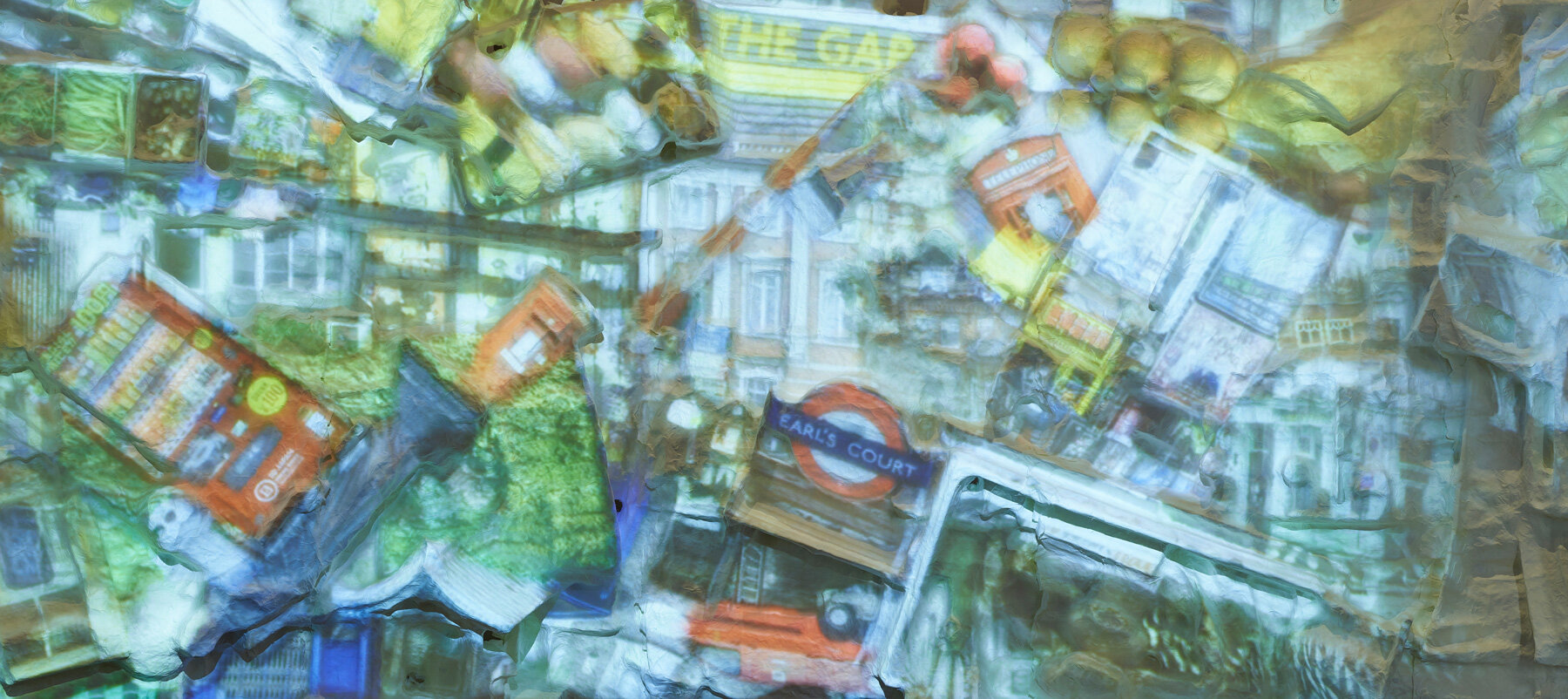
image © prudence cuming, courtesy of clare farrow studio
DB: what themes and topics is ‘sekisui house – kuma lab’ currently exploring?
TH: our lab is sponsored by sekisui house — one of the major industrialized housing manufacturers in japan, and our general theme is to think about how people will live. under this general theme we set more specific topics and investigate them in different formats such as studio courses and lecture series. information about our lecture series can be found here.
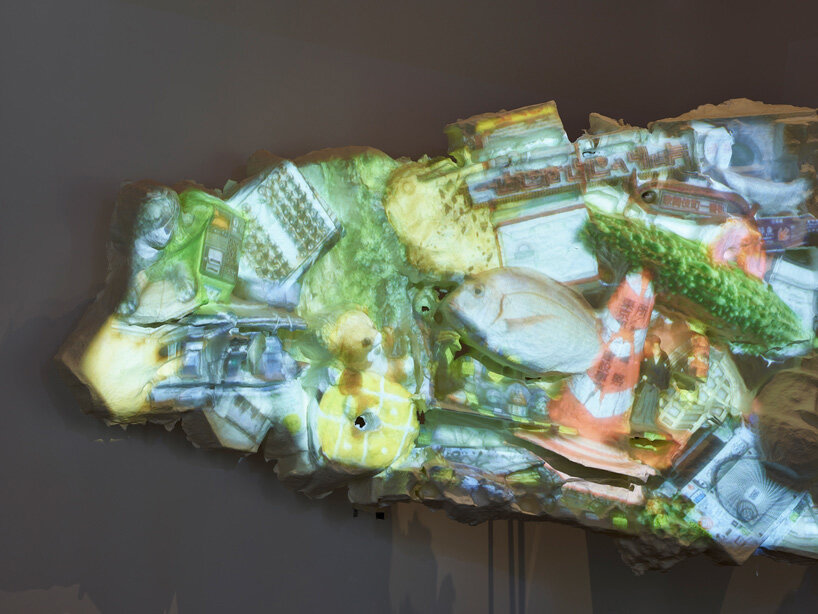
image © prudence cuming, courtesy of clare farrow studio
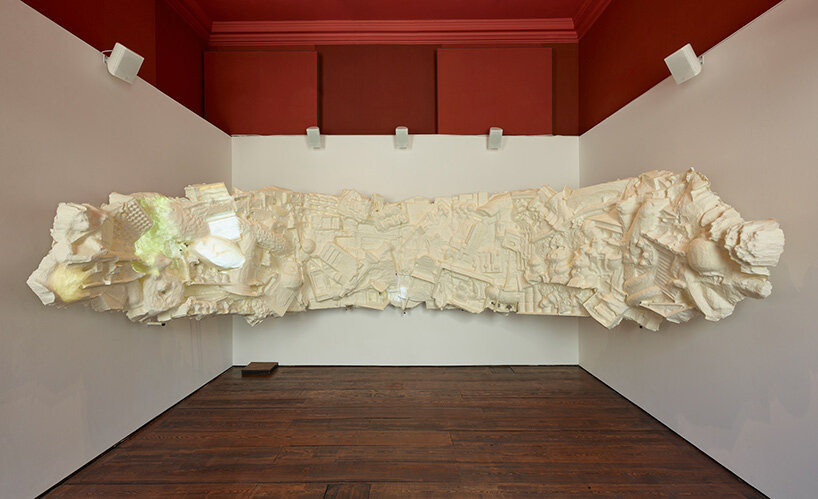
image © prudence cuming, courtesy of clare farrow studio
project info:
name: reinventing texture — japan pavilion
event: london design biennale
location: somerset house, london, UK
dates: june 1 – 27, 2021
designer: toshiki hirano, architectural designer and project assistant professor, the university of tokyo
curator: clare farrow, interdisciplinary curator and writer, clare farrow studio, london
partners: MA interior design at the royal college of art and MSCTY studio. with special thanks to professor graeme brooker, vicky richardson, and ma interior design students at the royal college of art, london: caroline bang; rita louis; lu yan; vanda hajizadeh; zhengxiao wang; liuxi lin; lisa breschi; yajing ding, ken man and xihe chen
sound collage: nick luscombe and james greer
interactive and sound design: panos tsagkarakis, kp acoustics
supporting body: sekisui house – kuma lab, the university of tokyo
main sponsor: KP acoustics
supporters: supported using public funding by the national lottery through arts council england; arts council tokyo (tokyo metropolitan foundation for history and culture); awagami factory; daiwa anglo-japanese foundation; japan airlines (JAL); japan foundation; POLA art foundation; nomura foundation; the great britain UNION foundation; the japan society; union foundation for ergodesign culture
architecture interviews (267)
toshiki hirano (5)
PRODUCT LIBRARY
a diverse digital database that acts as a valuable guide in gaining insight and information about a product directly from the manufacturer, and serves as a rich reference point in developing a project or scheme.





